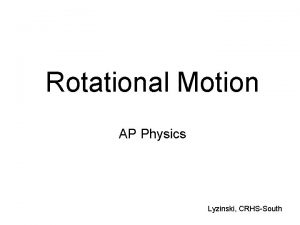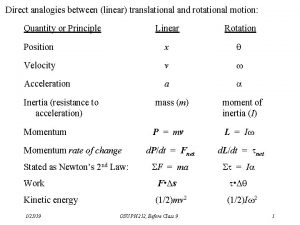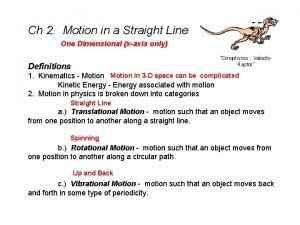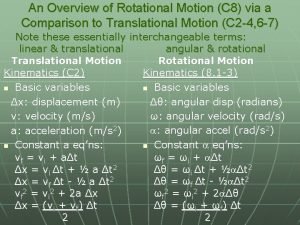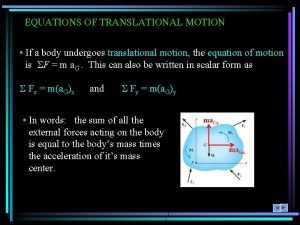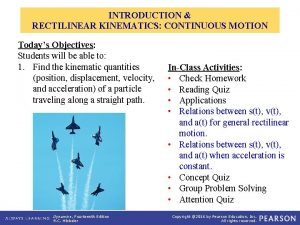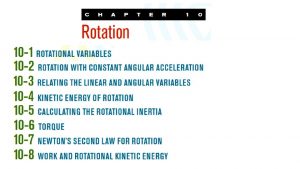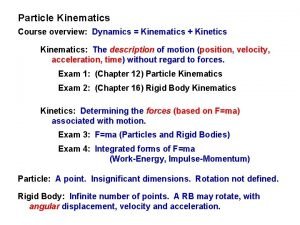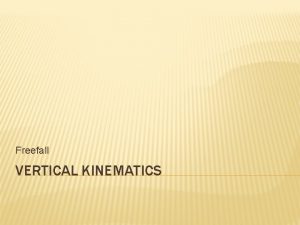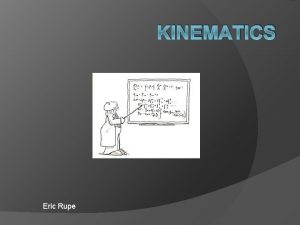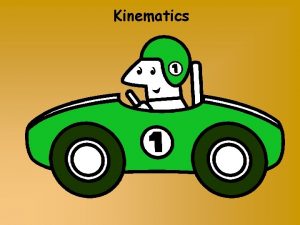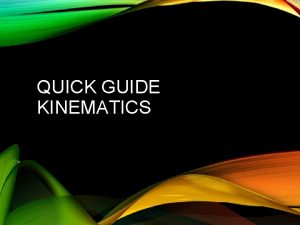When and Where Kinematics Translational Motion motion without









- Slides: 9

When and Where?

Kinematics �Translational Motion – motion without rotation �All measurements must be made with respect to a frame of reference �A man walks at 5 km/hr toward the front of a train traveling at 80 km/hr. What is the speed with respect to a) another passenger on the train b) a person standing outside the train? �Unless otherwise stated the frame of reference is the earth


Vector �Even distances need reference points �Need to say how many km from what point - may use words like “up”, “down”, “east”, “west”, etc. �Vector is a quantity that shows both a magnitude (amount) and a direction - Represented by an arrow �Scalar is a quantity that shows amount but not direction

Example For each below indicate if it is a vector or scalar quantity: 1) 5 m 2) 30 m/s East 3) 256 bytes 4) 5 mi North 5) 20 o. C above freezing 6) 4000 calories

Displacement vs Distance �Displacement of an object is defined as a change in position – it is a vector �Distance is not a vector �A person walks 70 m east and then turns around and walks 30 m west a) what is the total distance traveled b) what is the displacement

Position �A coordinate axis is often used to show a frame of reference from the zero point �Objects right of the zero have a positive value while those to the left are negative - positive and negative signs indicate direction �The position of the object is given by the x coordinate

Equation �Displacement is the ending position minus the starting position Δx = x 1 - x 0 �A person starts at the +30 km mark and then walks to the +10 km mark, what is their displacement

Example Consider a football coach pacing back and forth along the sidelines. The diagram below shows several of coach's positions at various times. At each marked position, the coach makes a "U-turn" and moves in the opposite direction. In other words, the coach moves from position A to B to C to D. What is the coach’s displacement and distance of travel?

